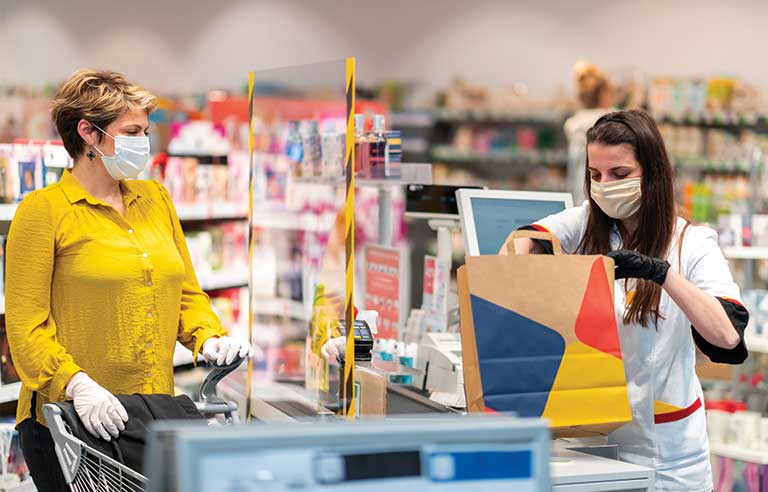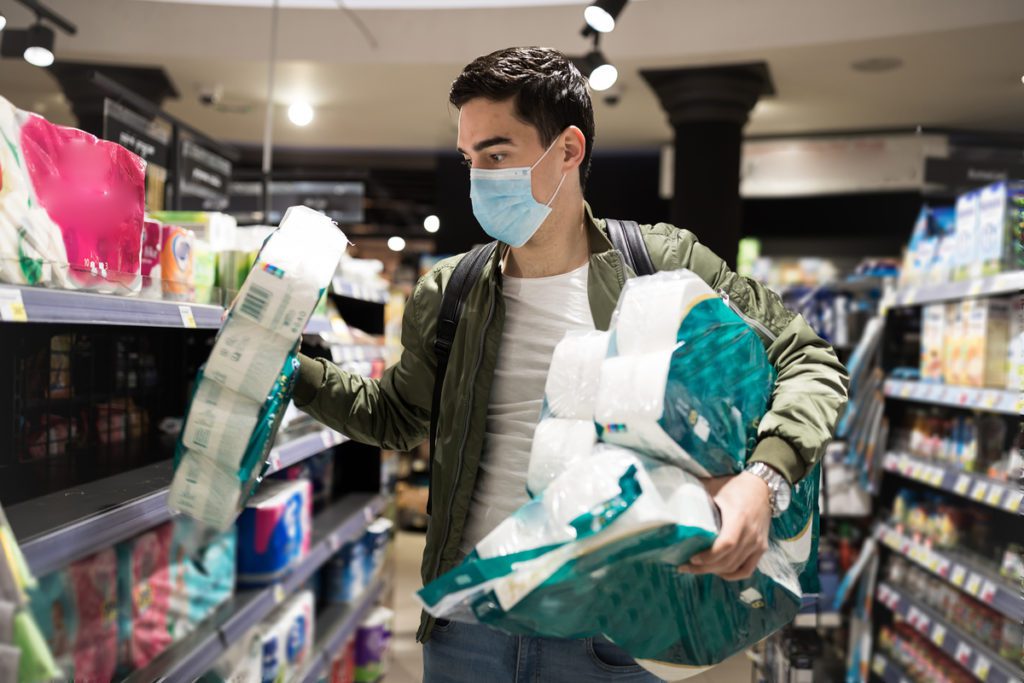
Governments are slowly starting to lift lockdown measures as COVID-19 numbers begin to flatten out across Europe. With hopes for the US to start following suit soon. Although stores and restaurants are beginning to open back up, it is crucial for business owners and consumers to realize that it is unlikely that life will return back to “normal”.
So, what does our “new normal” look like? How will business owners conduct their day to day operations differently? How will consumers shop with less contact, and in a safe manner? What does this look like for our economy as a whole?
Experts in the retail industry have gathered some insight to what the future of consumerism looks like. How will this impact the industry as a whole? Retailers are getting creative to keep consumers happy amidst the demand for products during the pandemic. And they are finding huge changes taking place as they begin to slowly open back up. Below are five insights to what the future of business to consumer (b2c) looks like.
1. E-commerce is here to stay
Retailers are just as excited as shoppers to open their doors and to figure out what their new normal looks like. The longer that COVID-19 lasts, the higher the chances are that online store and omnichannel purchasing will become the new standard for goods and services.[iii]
What does this mean for brick and mortar stores? What does this mean for the development of larger distribution centers to meet the raising demand of products?
How will companies like Rogers Electric adapt their business model to cater to the development of these new DCs and warehouses? The answer lies with time. Driving unique in-store experiences will become even more critical than before. Aiming to improve profitability and facilitate the omni-channel experience. [iii]
2. Sourcing and supply chain logistics must be managed
The need for retailers to source strategically to reduce the number of empty shelves in stores is becoming a significant factor. Whether retailers use curbside pick-up, direct delivery, or in-store purchases. Supply chain logistics are #1 for retailers for the remainder of 2020 and into next year. [i]
3. Attracting and retaining talent is crucial
Consumers are paying more attention to the customer service they are receiving. If your employees aren’t on their game, business will be negatively affected. Pre-COVID, customer service was in the top 5 most important aspects of running a business, but not necessarily number one.
Because there was constantly an overabundance of shopping, retailers focused on other aspects of business besides training employees. Whether it be at the grocery store, or different brick and mortar retailers, customers were never afraid to get out of their homes to shop.
With our current situation, if a shopper is willing to risk going to a large store with dozens of other shoppers and even employees, there is a lot more thought put into which store they choose.
Which safety precautions are in place? How serious is this retailer handling social distancing and sanitation? Retailers must be on top of their game with customer satisfaction in order to remain relevant and successful.
4. Inventory tracking and management keeps customers
There are notable product shortages as businesses see the effects of customer demands raising during this pandemic. To ensure retailers meet customer needs with groceries, medications, and priority items, retailers must put stronger efforts towards precision inventory tracking and management. [i] A
s we see the effects of COVID-19 ripple up the demand chain, stock availability is the biggest issue at hand. Retailers must take this into account and react proactively by strictly tracking available inventory and anticipating shortages.
5. A sustainable business model is needed
Retailers complying with government directives associated with protecting both staff and customers is at the top of the list for most important processes amidst reopening.
Floor stickers for social distancing, window stickers and signage throughout stores directing customers on direction of walking, new changes/processes for proper business operations, sneeze guards and register barriers, and much more are all part of the new normal for businesses to function properly. [ii]
The majority of retailer survival in the coming months will be based on how their business model reacts to the safety of its staff and customers, and what their e-commerce platform looks like. Challenges arising while navigating these new waters are inevitable, but retailers have the capabilities and resources to remain highly successful through the rest of 2020 and into 2021.

A new normal for retailers means a new normal for the companies that work to keep these retailers up and running. How will these 5 factors impact Rogers Electric’s business model?
As we make our way into Q3 of 2020, Rogers Electric’s #1 goal moving forward is to do what we’ve done for 37 years: get the job done for our customers. Whether that be updating brick and mortar stores, ground up electrical construction for new DC builds, or installs we have the manpower to continue head first into the work we have planned for 2020.
We remain confident in our ability to continue essential work and deliver the services our clients rely on. The spread of the virus has caused change with incredible speed and we are continually adapting our operations and business to best accommodate this change. We have and will continue to aggressively build resilience into our operations and services.
Head on over to our work page to check out the work we’re doing across the country.


